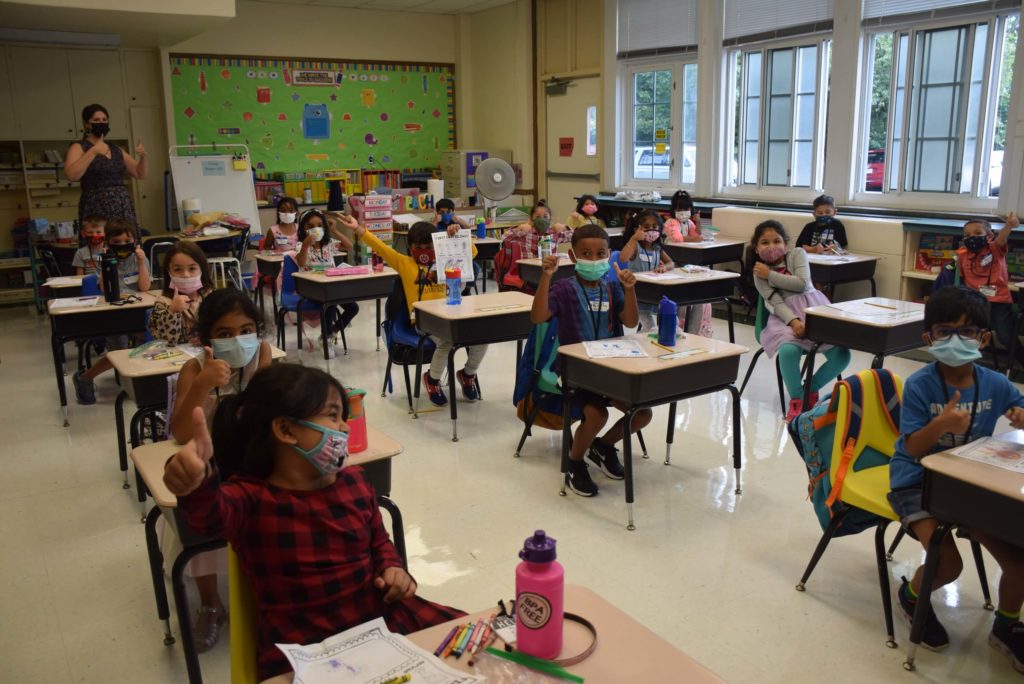In recent years, school districts across Nassau County have had debates over library books, diversity, equity and inclusion efforts, and most recently, a state Education Department regionalization initiative.
But nothing about teaching critical thinking and dealing with how to see through fake news.
We urge parents across Nassau to correct this oversight and question school boards on how their districts are promoting critical thinking and how to teach the skills needed to separate fact from fiction.
They should also demand the teaching of civics, educating students on how government operates. No American student should graduate from high school without being able to pass the test newcomers need to pass to become U.S. citizens.
We also urge parents to press elected officials to do more to stop the fire hose of falsehoods that have polluted public and private discourse by reining in social media.
Americans face a growing problem: a torrent of disinformation spewed on cable television news shows, websites and social media that will only grow with the expanded use of AI. Those spreading the disinformation include elected leaders, foreign governments and extremists worldwide.
Their work can be seen in the slaughter of innocents in New Orleans and the suicide of an active member of the military in a fiery explosion in Las Vegas. It is the reason that so many people don’t believe that Joe Biden won the 2020 presidential election and doubt the use of vaccines.
Disinformation is now a new problem, but it has never before had the means to spread to so many so quickly.
What can be done in Nassau County?
In Finland, children as young as 6 years old are being taught how to recognize fake news and disinformation in an initiative aimed at teaching residents, students, journalists and politicians how to counter false information designed to sow division.
Finland’s government launched its media literacy initiative in 2014 to counter Russian-backed propaganda campaigns aimed at their country on issues like immigration, the European Union, and joining NATO, which they eventually did.
Finland’s initiative began two years before Russia meddled in the 2016 U.S. presidential election, as documented by the report by Special Counsel Robert Mueller officially known as the “Report On The Investigation Into Russian Interference In The 2016 Presidential Election.”
The Nordic country shares an 830-mile border with Russia, but as the Mueller Report detailed, physical proximity is not necessary to sow confusion in our own country.
The initiative, part of Finland’s critical thinking curriculum, prioritized the skills students from elementary to high school, armed with laptops and smartphones, need to spot the sort of disinformation that has muddied recent elections in the U.S. and Europe the opinions of so many people.
Finland’s coursework includes examining claims found in YouTube videos and social media posts, comparing media bias in various “clickbait” articles, probing how misinformation preys on readers’ emotions, and even getting students to try writing fake news stories themselves.
At the heart of this are elements common to old-school journalism and the U.S. legal system—checking facts with reliable sources and using evidence to prove or disprove a case. These are essential tools in 2025.
European countries have pressed Facebook, X formerly known as Twitter, Google/YouTube and other big tech companies to take steps against the dissemination of disinformation.
In 2023, the European Union approved digital rules that require big tech companies to stop the spread of harmful content that is either illegal or violates a platform’s terms of service, and bans targeted advertising based on a person’s sexual orientation, religion, ethnicity, or political beliefs. It also puts restrictions on targeting ads to children.
The U.S. government has also approved efforts to regulate social media in recent years, particularly for children, as have state governments.
New York approved The Stop Addictive Feeds Exploitation Act and the New York Child Data Protection Act in 2024 to limit how social media companies can interact with minors
But the flow of harmful disinformation continues.
This means we need to do more to verify the information we receive with reliable sources and not simply accept whatever they come across on sites like Facebook or YouTube.
A good place to start is with our children.































